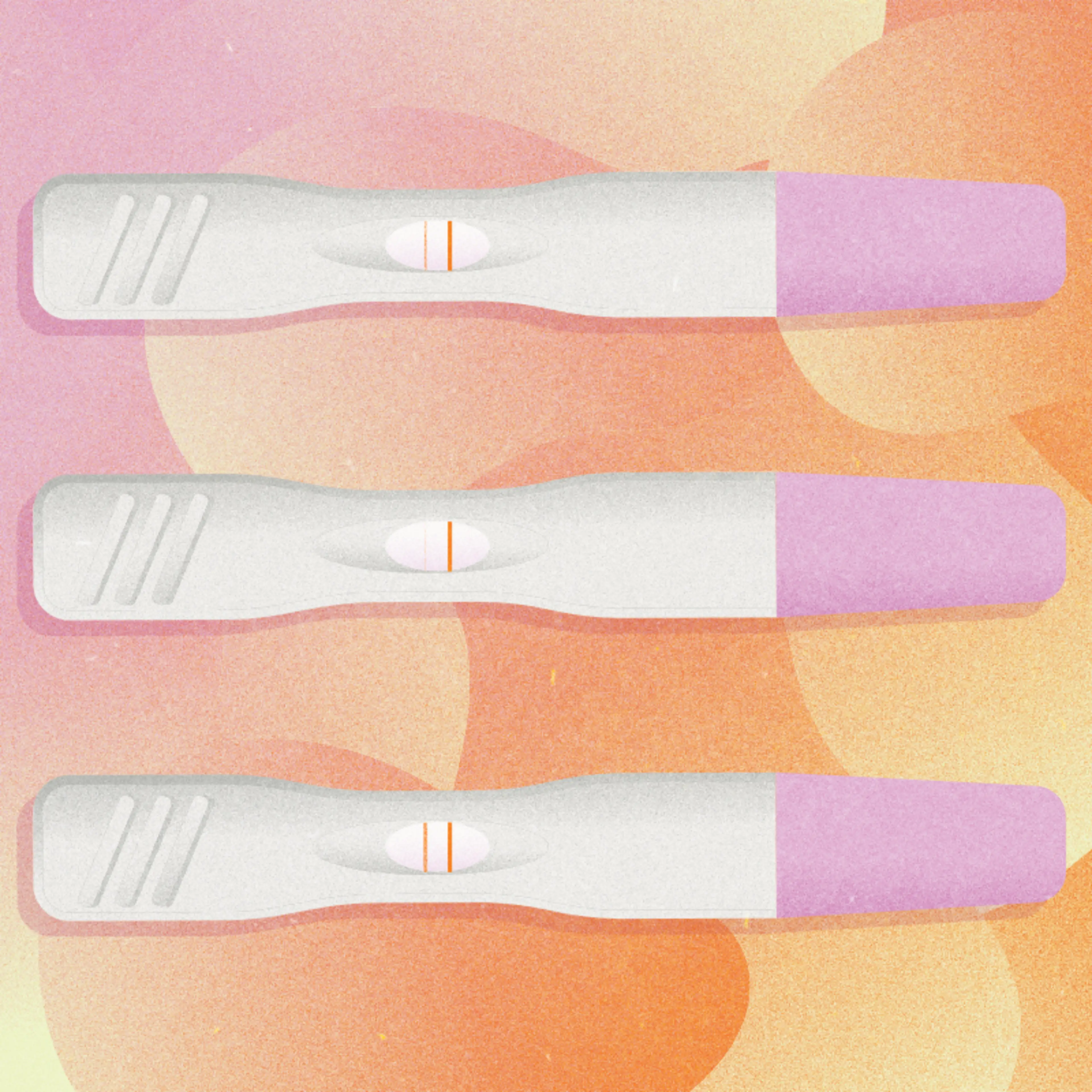Getting pregnant can take a week, a month, a year or even longer. And although there’s no way to predict exactly what your timeline may look like, it can be helpful to be informed about your cycle so you’ll know when you’re most fertile. Ovulation tests can help.
Designed to let you know the optimal time in your cycle to have sex in order to boost your shot at conceiving, ovulation tests are a popular, easy-to-use at-home test to take when you’re trying to get pregnant. We’re explaining the ins and outs of ovulation tests including how they work, when to take them and how to analyze the results, then outlining our four expert picks for the best ovulation tests.
What Is an Ovulation Test?
An ovulation test, also often called an ovulation predictor kit (OPK), is a test you can take at home that’s used to help you determine the most fertile days of your menstrual cycle. Ovulation tests can help you to pinpoint when you’re ovulating so you’ll know how to time intercourse in order to maximize your chances of getting pregnant.
“Narrowing down the window of when to focus those efforts can be helpful for people trying to get pregnant,” explained Al Bradlea, Dona-certified doula and lactation consultant.
Although there are other ways to monitor your fertile window, such as fertility charting 1 to track your basal body temperature and your cervical mucus on a daily basis, ovulation tests are more appealing to some people and a bit less intensive.
How Do Ovulation Tests Work?
Ovulation tests work by tracking your body’s production of luteinizing hormone (LH) 2 , a hormone that stimulates the ovaries.
LH is always present in your urine; however, 24-48 hours before ovulation (when an egg is released from one of your ovaries), the amount of LH in your body rises. This is referred to as your LH surge, and it’s during this one- to two-day window in your cycle prior to ovulation that you’re most fertile.
Ovulation tests detect the levels of LH in your urine. OPKs make it easy to pinpoint your LH surge and to identify your most fertile time so you’ll know when to have sex and increase your chances of pregnancy.
How Accurate Are Ovulation Tests?
According to the American Pregnancy Association (APA) 3 , ovulation tests are 99% accurate in detecting the LH surge that happens prior to ovulation. But there are some important things to note when trying to understand this statistic.
While ovulation tests can tell you when your LH is on the rise, they can’t confirm if you’ve actually ovulated or not. Some women have an LH surge and never release an egg, while others experience a few false surges of LH before it actually peaks. (The latter is common in women with Polycystic Ovarian Syndrome 4 , or PCOS, a condition that can affect your cycle, hormones and fertility.) If you’re unsure about your ovulation, or are seeing some inconsistencies with your ovulation tests, it’s a good idea to talk to your doctor about your concerns.
“It’s important to know that [ovulation tests] are not perfect,” explains Bradlea. “For every person, the time between when the LH spike happens and the egg releases is different. It could be a few hours later; it could be a few days later.”
One other important thing to note: if you’re someone who experiences longer than average or more irregular cycles, you’ll likely need to stock up on more ovulation tests than the average person. Most ovulation predictor kits only come with a limited amount of test strips, which may not be enough to cover the timeframe when ovulation might occur for you.
“If you’re overwhelmed and you’re taking ovulation test kits daily, cycle after cycle, and nothing is coming of it, it’s time to talk to your doctor,” says Bradlea. “Because stress and overanalyzing is not great for conception either.”
When to Take an Ovulation Test
Timing plays a big role in fertility, and it plays a big role in when to take an ovulation test, too. It’s important to understand the right time to use an ovulation test in order to up your chances of conceiving. There are a few things you’ll need to figure out in order to know when to take an ovulation test.
Determine the length of your cycle. According to the Mayo Clinic 5 , most menstrual cycles—counted by the first day of one period to the first day of the next—are between about 21 and 35 days long. You’ll want to figure out your cycle length prior to beginning testing. If your cycle is irregular by more than a few days, figure out the average number of days over the last three months and use that number.
Determine when you ovulate. Next, you’ll want to figure out approximately when in your cycle you should be ovulating. You can use an ovulation calculator to help determine this or some simple math. Ovulation varies person to person, but for many it’s usually somewhere in the middle of your cycle, about 14 days after your period begins, according to the Mayo Clinic 6 . If your average cycle is 28 days, for example, you’ll likely ovulate around day 14. (Just remember this is only an average, though, so it may be different for you.)
Begin testing at least 3-4 days prior to ovulation. You should begin using your ovulation test at least three to four days prior to when you think ovulation should occur. (If your cycle is irregular, you may want to build in a few extra days as a buffer.) This means that if you have a 28-day cycle, you’ll want to start testing on day ten.
Overwhelmed by all of this math? Don’t worry—most ovulation tests come with clear, easy instructions and a chart to help you determine when you should begin testing. There are even video resources from most test brands available that can help.
How to Use an Ovulation Test
Most ovulation tests use urine and are extremely easy to use. You’ll want to read the specific instructions that are included with your test to ensure you use it properly to get the most accurate results.
Most tests recommend you either hold the tip of the test strip under your stream of urine or dip it in a small cup filled with urine. If you’re using a test strip without a monitor, you’ll be looking for colored lines on the strip itself; if your ovulation test comes with a monitor, you’ll refer to that to read the results. And you won’t have to wait long—most tests take only a few minutes or so.
There’s no best time of day to take an ovulation test. They can be taken any time—just be sure you’re consistent and take the test at the same time each day. The APA recommends reducing your liquid intake about four hours prior to testing.
Ovulation Test Results
You’ve peed on a stick—so now what? You need to know what to look for when reading your ovulation results and what to do next.
How to read an ovulation test
Each ovulation test is different, so be sure to carefully read the instructions on yours so you know how to read the results correctly. If you’re using only a test strip, most have two lines: a control and a testing line. The control line lets you know the test is working properly, while the second line is the test line. (Line colors will vary depending on what brand of test you’re using.) For most tests, when the test line is as dark or darker than the control line, this means the test is positive and your LH is surging.
If you’re using an ovulation test that includes a digital monitor, you’ll need to look for your results on the monitor’s screen. While symbols vary test by test, most digital ovulation tests use a smiley face to indicate that the test is positive.
You got a positive ovulation test—what’s next?
If your ovulation test is positive, it’s time to get down to business! Per the AAP 9 , the three days after a positive test ovulation test is the best time to have sex in order to increase your chances of getting pregnant.
What about a negative ovulation test?
If you get a negative ovulation test result, keep testing—it’s likely your LH surge simply hasn’t happened yet and you need a few more days. If you’re receiving consecutive negative ovulation tests for more than a few weeks, there could be a few reasons.
You missed your window. It’s possible you started testing too early or too late, or that your cycle is off for any number of reasons (stress, illness, etc.). You may also be having an anovulatory cycle when an egg is not released. Try again during your next cycle.
Test malfunction or human error. Be sure that your testing kit isn’t expired or malfunctioning somehow, and make sure you’re reading (and following!) all directions carefully.
Medication interference or pregnancy. According to the Fertility Treatment Center 10 , some medications will interfere with ovulation test kit results, so check with your doctor on what to do if you’re taking one that does. Being pregnant or recently pregnant will also interfere with the test’s results.
Underlying condition. Certain conditions may be present that are either preventing you from ovulating or making it difficult for the ovulation test to detect the correct timing of your LH surge. If you continue to experience negative ovulation tests, make an appointment to talk with your doctor.
How soon after ovulation can you take a pregnancy test?
The APA 11 recommends that you wait until you miss your period before taking a pregnancy test. That’s because it takes time for hCG, the hormone your body secretes while pregnant, to build in your system to a high enough level that’s detectable via a pregnancy test.












